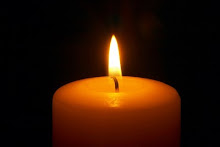Nigeria
and India’s population figures in their respective continents have accorded
them powerhouse status- Nigeria
is MINT while India is a BRIC and the relations between them have been
cordial. Recently, Nigeria-India relations was shaken when a Nigerian was murdered in Gao,India. I was
listening to a radio commentary on the murder and the comments by an Indian Minister describing Nigerians as a
cancer after protests by Nigerians in that community. A commentator noted that
there was no difference between Nigeria and India and Nigerians resident in India should
return home. I was surprised that the listening public vehemently disagreed
with the remark.
I
submit that Indians and Nigerians are very similar in shared experiences, attitudes,
values and living conditions. For instance, on issues that would
require explanation to an European, American or Chinese, my Indian friends
understood immediately. I also remember when an Indian tried to rip me off. When I told him I
was Nigerian, he refunded my money. Even our communication patterns are similar. As Nigerians we are not wired to keep it short and simple, I have discovered same with the Indians I interact with.
A colleague once mentioned to me that
Africans especially Nigerians underestimate the level of development that has
occurred in the continent. He noted that though Africa is far behind, there is a semblance of
organization around our under-development. He cited the example of
Victoria Island and Ajegunle where you can differentiate uptown and downtown.
In India there is no such organization, beside a castle is a shack. Another colleague
on a work-related visit to China recalled when she and 3 other colleagues
(Pakistani, Indian and Indonesian) were lost in China. The Indonesian was
frantic whilst the other 3 had the what-is-the-worst-that-can-happen. To buttress my belief that we are similar below are
comparisons from reports and studies on India and Nigeria
Metric
|
Nigeria
|
India
|
Population
|
Approx. 170 million
|
Approx. 1.2 billion
|
Colonial Power
|
Britain
|
Britain
|
Electricity
|
66% of the population, this article puts it at 400 million people have no
access to power
|
According to Nigeria’s Minister about 70% of the
population have no access to electricity i.e about 120 million people
|
Income Category
|
Lower middle income
|
Lower middle income
|
Year of Independence
|
1960
|
1947
|
World Bank Ease of doing Business
ranking
|
134/189
|
147/189
|
Purchasing Power Parity: India does better
In simple terms, PPP is “the rate at which
the currency of one country would have to be converted into that of another
country to buy the same amount of goods and services in that country” (IMF
definition). The PPP exchange rate is the rate at which the currency of one
country would have to be converted into that of another country to but the same
amount of goods and services in each country. The idea is all things being
equal, a bottle of coke in India should cost the same as in Nigeria.
Some calculations go into determining PPP between countries but for this post,
simple mathematics would suffice. In India the average price of 33cl Coca-Cola is 20
rupees. In Nigeria,33cl of Coke costs 24 rupees
Bad roads everywhere
In both countries, roads are the major
means of transportation for people and goods and are in dire need of repair.
According to this Deloitte report, 10% of India’s roads are motorable with poor connectivity to hinterland. This lack of access is a reason
that has been adduced for India’s slow development rate. Nigeria’s story is
also similar. According to PWC’s Africa’s Gearing Up report,
only ¾ of Federal roads are in a fair state (Nigeria’s road network comprises
32100 km of Federal roads, 30,900 of State roads and 132,000km of local
government roads). CIA world report notes that of Nigeria’s
193, 200km roads, only 28, 980 km is paved.
Nigeria and India rank poorly on the
Liveability index
The Economist Intelligence Unit’s
(EIU) Liveability index ranks 140 cities on stability, healthcare, culture and
environment, education and infrastructure. In 2011, New Delhi ranked 113,
Mumbai - 118 and Lagos ranked 137. Compared to other BRIC nations, India is the
worst (Beijing -72, Moscow-70, Rio de Janeiro – 92)
Systemic corruption abounds
Corruption is systemic in both India and Nigeria. On Transparency International’s
Corruption Perception Index, India ranks 94/176 while Nigeria ranks
137/176. Government Institutions in both countries are highly
corrupt and the price paid for corruption is very high in terms of lost
opportunities to develop. A friend recalled his experience at India’s
immigration and same scenario would have occurred in Lagos.
The difference between India and Nigeria
is six and half a dozen. However,India has developed a niche in Engineering and also developed healthcare tourism and it is a possibility that Nigeria will fare worse if her population was over a billion. In the words of the commentator, why leave one
shack for another? Nigeria is just 170 million. Isn’t it easier to
compete with 170 million people than 1 billion people?
Deuces.
P.S:Lord Lugard- Nigeria’s first governor
general was born in India and also served in India
P.P.S: An interesting study would be the
effects of British Colonial rule on attitudes of both Indians and Nigerians.
For instance after the British left India, did Indian elites take over and become Ogas like their Nigerian counterparts?
Why was India divided into India and Pakistan at Independence, yet Biafra was
not “allowed” to secede from Nigeria?






0 Thoughts:
Post a Comment